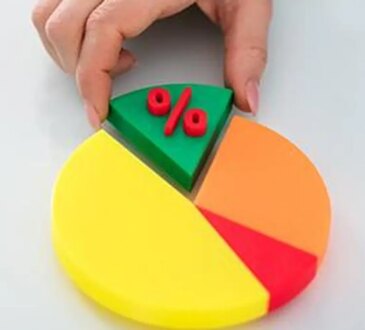Many individuals wish to make their money grow over time and often consider using real estate investment trusts or gold. Still, correctly understanding how your investments develop is more complicated than just looking at the ups and downs of their value.
This article demonstrates how a REIT and Gold compound interest calculator can show how your REIT and gold investments may perform under compound interest, while also factoring in the loss of value due to inflation.
The Power of Compounding
Compound interest allows you to earn money from your initial investment as well as from the previous gains you made which increase your wealth over the years.
Unlike simple interest, where ₹100 at 5% earns only ₹25 over 5 years. Compound interest reinvests gains: ₹100 at 5% compounded annually becomes approximately ₹127.63 in 5 years.
If you invest and reinvest early and often, you will find your savings grow much faster.
Compounding Through Rental Income and Appreciation (REITs)
REITs are businesses that manage or support properties that bring in income, such as various office spaces, housing complexes, malls or warehouses. Let’s find out how REITs generate returns:
- Dividends: Regulations require REITs to distribute at least 90% of taxable income as dividends annually. It turns into a consistent income stream.
- Capital Appreciation: Over time, the value of real estate assets may rise, boosting share prices.
By reinvesting these dividends, investors purchase additional units, which in turn generate more dividends. This cycle creates a powerful loop of compounding returns.
Key Areas to Consider for Using a Compound Interest Calculator for REITs:
Enter values like:
- Initial investment, for example, ₹1 lakh.
- Annual dividend yield between 6% and 8%
- Estimated appreciation between 3% and 5%
- Duration of about 5-10 years
Compounding Through Gold
Gold has long been seen as a store of value, a hedge against inflation and a safe-haven asset during market turbulence. The gold compounding process includes:
- Value Preservation: Over decades, gold maintains its purchasing power — a critical feature in inflationary periods.
- Price Appreciation: Global demand-supply dynamics, currency depreciation, and geopolitical factors often lead to gold price increases.
Unlike REITs, gold doesn’t pay interest or dividends. However, it can still grow in value.
Compound Interest Calculator for Gold, Consider These Factors
Input:
- Initial investment
- Expected annual appreciation, for example, 5% and 7% based on historical trends.
- Duration of investment
Although it doesn’t offer income reinvestment, you can still model capital growth using suitable tools to simulate long-term gold appreciation.
The Impact of Inflation on Real Returns vs. Nominal Returns
Continuous rising prices of goods or services are referred to as inflation, which erodes the purchasing power of consumers. For investors, this occurrence means that a 7% return in an investment with 5% inflation results in only a 2% real return. Thus, without analysing inflation, your investment goals may fall short.
To mitigate such an occurrence, you can use an inflation calculator. This tool adjusts future values to reflect today’s money. For instance, ₹10 lakh in 20 years might only be worth ₹4–5 lakh in today’s terms, depending on the average inflation rate of about 4.5%.
Steps to Use the Compound Interest Calculator Effectively
To use a compound interest calculator efficiently, gather these key inputs:
- Initial investment
- Annual contributions
- Expected annual return, including dividends or appreciation.
- Investment duration
Run multiple scenarios to test outcomes:
- Increase contribution amounts
- Adjust return rates
- Add the inflation rate to see realistic projections using an integrated inflation calculator.
Use monthly compounding if it is supported by the tool. This results in higher effective returns than annual compounding. You can also save scenarios or export data to compare different plans.
Final Thoughts
While building wealth in the long run, REITs provide income from properties and dividends, while gold protects your money and helps it grow in value. Nevertheless, people can grasp the true value of these investments by considering collective gains and inflation.
A compound interest calculator makes it easy to observe the quick rise in income due to continuous investments and savings. If you use an inflation calculator in addition to this, you can more easily see what your money can buy and avoid making overly ambitious financial aims.
FAQs
1. What is compound interest, and how does it apply to REITs and gold?
Compound interest is the name given to earning interest on the initial value and also on the previous gains. In an REIT, this comes about by reinvesting your dividends, whereas gold gains in value as time passes.
2. Can gold investments benefit from compound interest?
Gold may not bring you income, but its value gradually increases through time. Simply put 5%–7% in our calculator for annual appreciation, and the time it will take you to make your investment and see the example of price increases each year.
3. Why is adjusting for inflation important in these calculations?
Inflation causes money to lose its purchasing power. With 5% inflation and a 7% return, you will only get a 2% real return. If you account for inflation, your financial planning will be more realistic.
4. Can I compare REIT and gold investments using this calculator?
Yes, you can run side-by-side scenarios for REITs and gold, using the same initial investment and time period. This way, you can understand which asset class has the better real return on your money.
5. Is this calculator suitable for short-term investments?
The answer is maybe yes, but the calculator is optimised for long-term projections (5 years or more), where the power of compounding and inflation adjustments is more impactful.
6. What is the difference between nominal and real returns?
Nominal returns are the gains before adjusting for inflation. On the other hand, real returns subtract the inflation rate. It offers a clearer picture of how much your investment is truly worth in today’s terms.
ThePrint BrandIt content is a paid-for, sponsored article. Journalists of ThePrint are not involved in reporting or writing it.




